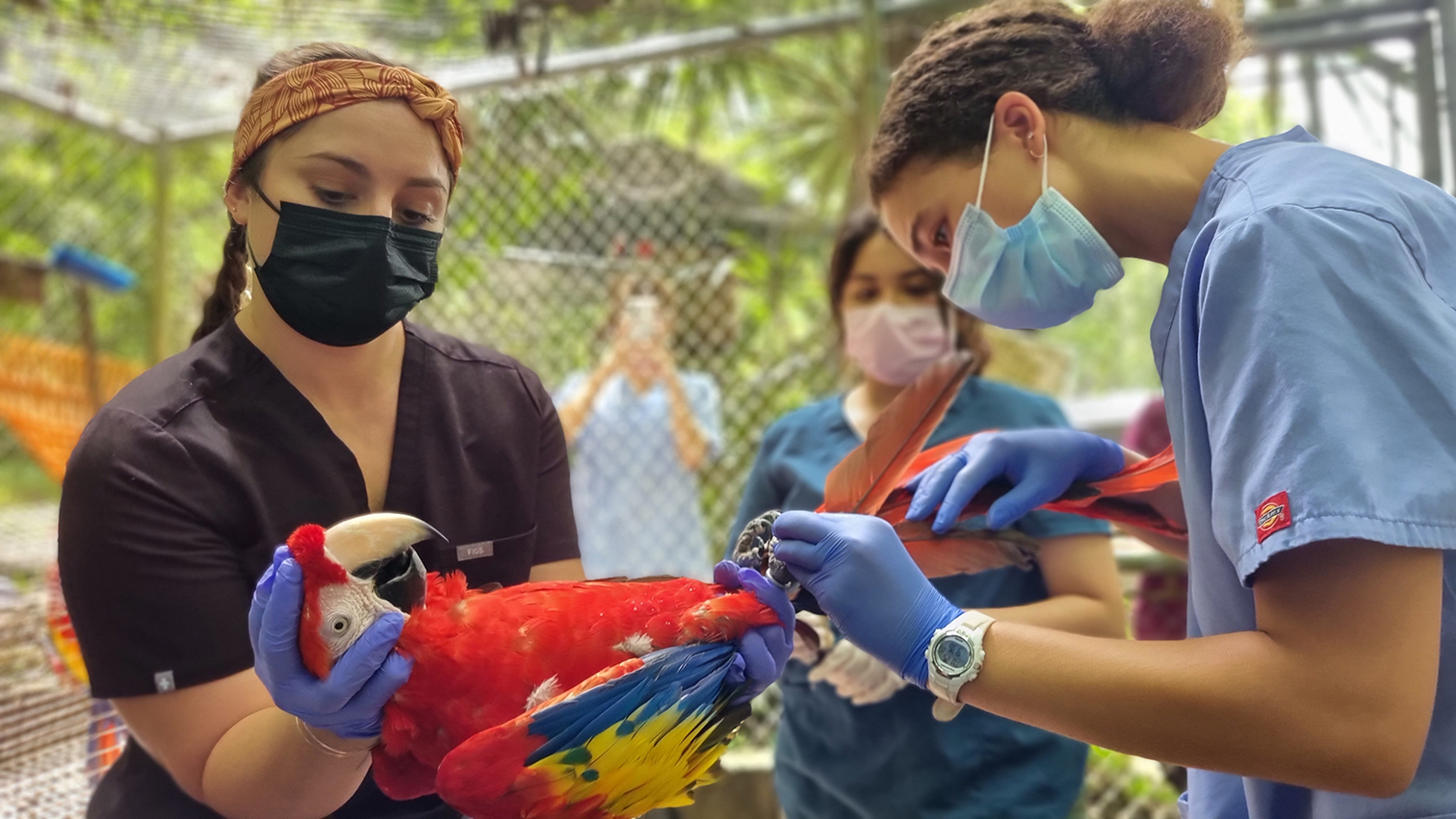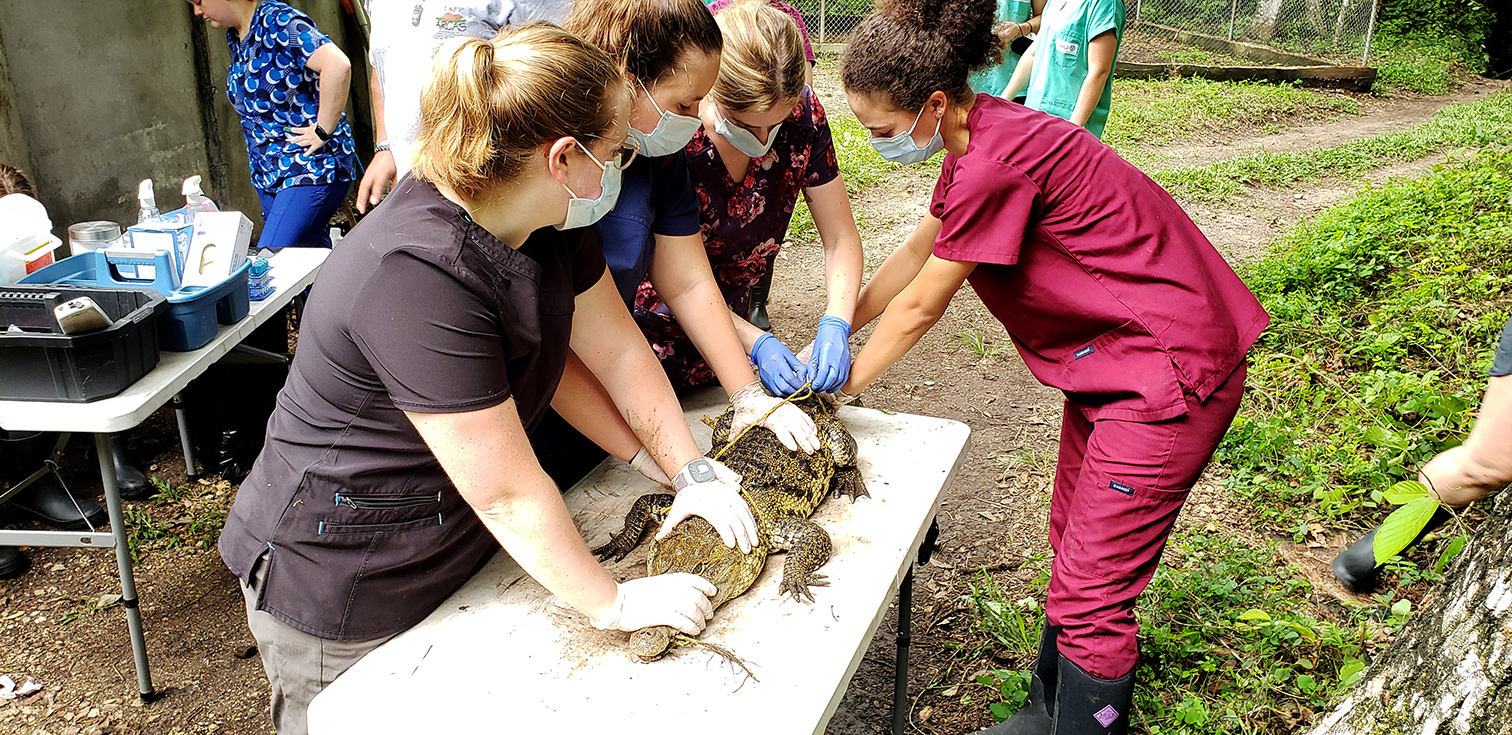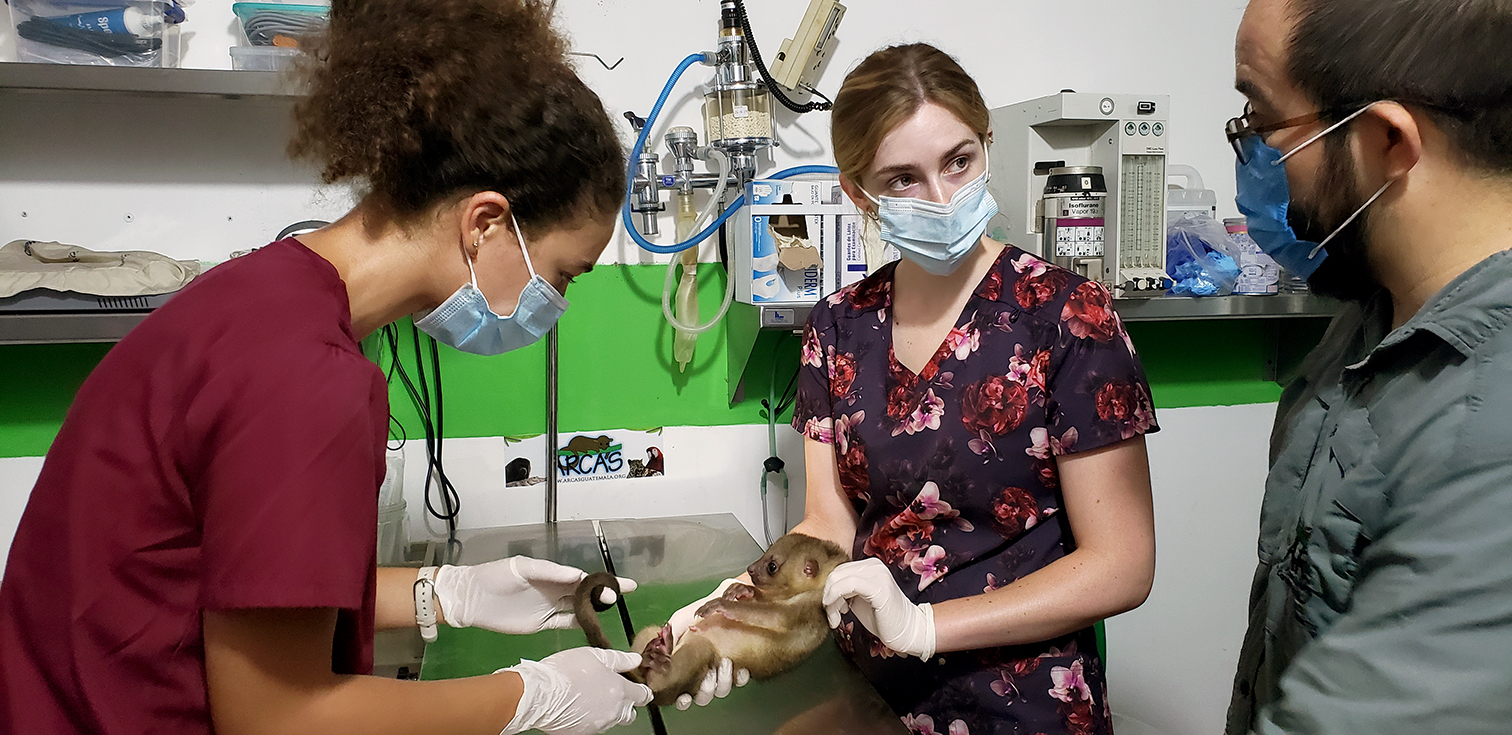Erin Babinec
ARCAS is a wildlife rescue and rehabilitation center located in the Guatemalan rainforest along Lake Peten Itza. Every year, ARCAS receives hundreds of animals that have been confiscated from the black market by the Guatemalan government. Those that survive the horrors of the illegal wildlife trade are either released into protected habitats, or remain in captivity lifelong. Rehabilitation in some species can take up to 10 years, and animals can be deemed non-releasable at any time if they begin showing behaviors not conducive to life in the wild.
Fifteen other students and I lived and worked at the rescue center full time, going to sleep listening to the calls of the wild howler monkeys, and waking up at 6AM to the hungry squawking of the captive macaws. We were paired up with a roommate, and each room had a toilet, shower, and sink. The showers were cold, which was often refreshing after working in the heat, but the water pressure was very poor. We often had small visitors in our room, including numerous bugs, a frog, and a gecko. There are of course snakes in the rainforest, however the rooms were secure enough to keep them out.

Animal cages were assigned to us, and we were responsible for preparing food, feeding, cleaning, and observing those animals 2 to 3 times a day. Most of the animals we worked with were in the early stages of rehabilitation, so we were to keep human contact to a minimum. I worked primarily with scarlet macaws, toucans, crocodiles, turtles, and a tamandua, the tree-dwelling lesser anteater. The numerous other species in our collective care, including baby howler monkeys, parrots, hawks, foxes, and opossums, were assigned to other students or staff and I unfortunately did not receive as much exposure to them. I would have enjoyed working with more species and having the opportunity to learn more about their care and habits.
When we weren’t maintaining our respective cages, we had alternating days of classroom lessons and practicals, including hands on work with reptiles, birds, monkeys, and small mammals. We would perform physical exams and administer any necessary treatments. We also had necropsy and clinic days where we had the opportunity to work closely with Dr Morales and focus on medicine. These were my favorite days, and I wish there were more of them incorporated into the program. Due to the large number of students in the program at this time, we only had two clinic days each.

Dr Morales, Dr Lincoln, and Anna were very kind and knowledgeable. I really enjoyed working amongst them and learning from them. The other staff spoke very little English so I would highly recommend knowing some Spanish prior to arrival to make the most of this experience. However, most students did not speak any Spanish and were not especially hindered by that. I really loved practicing my Spanish, getting to know everyone, and trying to learn and connect with those around me.
Traditional meals were served three times a day, or you could go into the nearby town of Flores by boat for dinner and to grab some snacks. We were often done with the workday around 4:30 so there was plenty of time to relax and socialize. We took a bus to Tikal National Park on the weekend, Guatemala’s most famous cultural and natural preserve, where we got to spend the night in a hotel that had the luxury of hot water.
This experience was a once in a lifetime opportunity for me. As someone who has never been close to these species, let alone handled them, these experiences were an amazing introduction to the world of exotic wildlife. Prior to coming to ARCAS, I did not truly understand the horrifying realities of the black market, and the years of struggle involved in rehabilitation. Through this program I have made some lifelong friends, many unforgettable memories, and I have gained a better understanding of the world as we live it.

